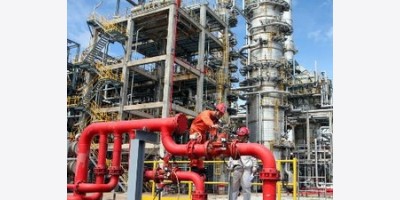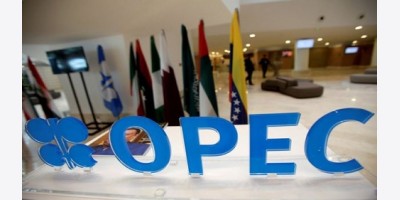By Bloomberg
A drop in OPEC production came just as refineries began looking for supply, helping boost bullish speculative bets on crude last week by the most since July.
The group, which pumps about 40 percent of the world’s oil, reduced output to the lowest for March since 2011 as a standoff between the Libyan government and rebels kept exports near the lowest level since Muammar Qaddafi was driven from office.
Output from the Organization of Petroleum Exporting Countries fell for the fifth time in seven months, according to a Bloomberg News survey. The International Energy Agency, which advises oil-consuming countries, said April 11 that OPEC will have to pump more crude after a “steep drop” last month. Refiners in the U.S. and Europe are looking for oil after retooling to make gasoline, as motorists prepare to take to the highways with warmer weather.
“The barrels that weren’t produced in March won’t be on hand when refiners are increasing gasoline output in the months ahead,” said Michael Lynch, president of Strategic Energy & Economic Research in Winchester, Massachusetts. “Supplies will get tighter as refiners come out of maintenance.”
Speculative bets on rising prices for West Texas Intermediate, the U.S. benchmark, are the highest for this time of year since 2006, U.S. Commodity Futures Trading Commission data show. Futures advanced 2.8 percent to $102.56 a barrel on the New York Mercantile Exchange in the period covered by the CFTC report. WTI climbed 34 cents, or 0.3 percent, to close at $103.74 on April 11, the highest settlement since March 3.
OPEC production fell by 890,000 barrels a day to 29.6 million in March, the Paris-based IEA said in its monthly oil market report. The group will need to pump 30.6 million barrels a day in the second half to meet demand, the agency estimated.
Global consumption is projected to rise 1.4 percent this year to an average 92.7 million barrels a day, led by gains in Asia, according to the IEA. Chinese consumption is forecast to climb 3.4 percent to 10.5 million barrels a day.
Libyan output fell by 100,000 barrels to 250,000, the 10th drop in 12 months, the Bloomberg survey showed. The North African country pumped 1.59 million in January 2011 before the uprising that led to the ouster and death of Muammar Qaddafi. Iraqi production fell 50,000 barrels a day to 3.35 million, according to data compiled by Bloomberg, as pipeline attacks halted exports from northern fields. Production surged to 3.4 million barrels a day in February, the highest level since 2000.
Libya was set to raise oil shipments this week as a tanker was booked to load crude from one of four ports seized last year by rebels. State-run National Oil Corp. lifted force majeure on the Hariga terminal on April 10, according to a statement on its website. Vienna-based oil company OMV AG provisionally booked a tanker to load as much as a million barrels from the port next week, according to two traders with knowledge of the matter.
Saudi Arabian production slipped 285,000 barrels a day to 9.57 million in March, the IEA said. The desert kingdom will probably pump more crude this month as refineries end maintenance programs and domestic demand increases, the agency said. Saudi output gained 100,000 barrels a day to 9.75 million last month, Bloomberg said in a separate survey of companies, producers and analysts.
Hedge funds and other money managers boosted net-long positions in WTI by 30,135, or 10 percent, to 331,056 futures and options in the week ended April 8, the CFTC reported. Long positions rose 4.8 percent, while shorts fell 37 percent, the most since March 2011.
“Long positions climbed to the fifth-highest level on record,” said Tim Evans, an energy analyst at Citi Futures Perspective in New York. “They reached a record March 4, slipped back and are now run it back up toward the high. There’s nothing to stop more players to come in.”
Money managers’ bullish wagers on U.S. ultra low sulfur diesel decreased 29 percent to 15,065. The fuel rose 4.66 cents, or 1.6 percent, to $2.9344 a gallon in the report week and dropped 0.58 cent to close at $2.9332 April 11.
Net-long wagers on four U.S. natural gas contracts climbed 1.5 percent to 418,218. The measure includes an index of four contracts adjusted to futures equivalents: Nymex natural gas futures, Nymex Henry Hub Swap Futures, Nymex ClearPort Henry Hub Penultimate Swaps and the ICE Futures U.S. Henry Hub contract.
Natural gas futures rose 6 percent to $4.534 per million British thermal units on Nymex during the report week. They fell 0.8 percent to settle at $4.62 on April 11.
“We’re vulnerable,” Evans said. “Much of the drop in OPEC production was incidental, with us following the situation in Libya in real time. The Saudis are trying to manage supply at a weak demand period and not manipulate prices.”
To contact the reporter on this story: Mark Shenk in New York at mshenk1@bloomberg.net
To contact the editors responsible for this story: Dan Stets at dstets@bloomberg.net Bill Banker























